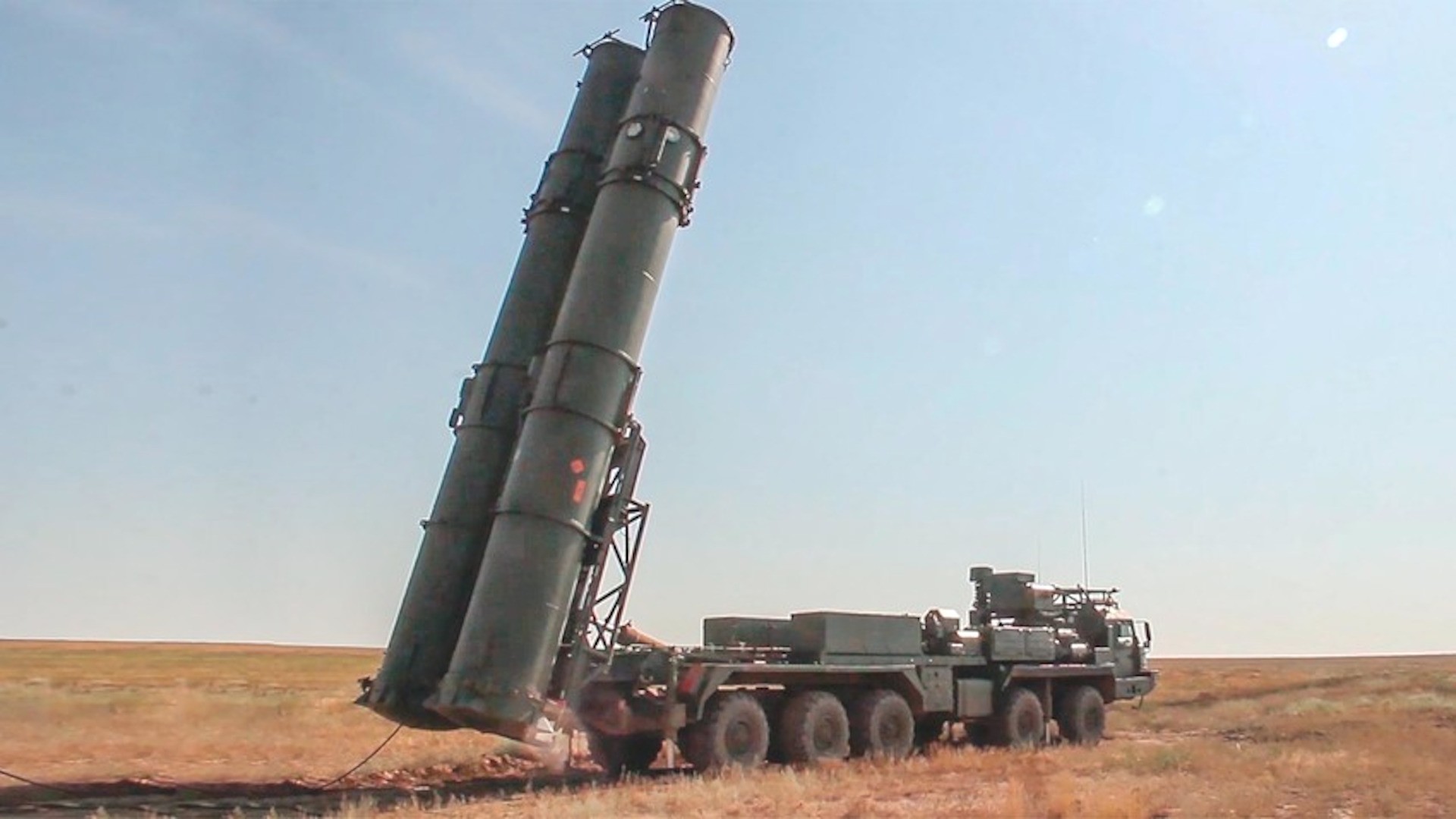Russia has moved one of its S-500 air defense systems, the most advanced it has, to the occupied Crimean Peninsula to protect the Kerch Bridge, Ukraine’s spy boss said Wednesday. If true, it would mark the first known time it has been fielded and would provide Russia with significant air defense capabilities, especially against ballistic missiles.
“The latest elements of the S-500 have appeared,” in Kerch City, Lt. Gen Kyrylo Budanov, head of the Ukrainian Defense Intelligence Directorate, said in an interview with Ukrainian media. “This will, in principle, be an experimental application…. Kerch Bridge is always used, and as long as it’s there, it will be used.”
The War Zone could not independently verify Budanov’s claim
The system, which is named Prometey (Russian for Prometheus), is designed to provide theater ballistic missile defense and other long-range air defense capabilities. It was developed to eventually replace the current A-135 anti-ballistic missile system deployed in silos around Moscow. It is also intended to supplement the long-range S-400 Triumf surface-to-air missile (SAM) system, examples of which have been the frequent target of Ukrainian attacks.
In April, then-Russian Defense Minister Sergei Shoigu said that the systems would be fielded sometime this year, in two versions, missile defense and anti-aircraft, the official Russian news agency TASS reported.
Russia first released video of an S-500 launch, conducted during a test campaign at Kapustin Yar, near Astrakhan in southern Russia in July 2021. It reportedly downed a ballistic missile surrogate target, according to the Russian Ministry of Defense at the time. You can see that in action in the video below.

This followed a test of the system in 2018, where Russian authorities said it hit a target nearly 300 miles away. According to a past report from Russia’s state-run media outlet RIA Novosti, the S-500’s maximum range is around 370 miles. Russian officials have also previously said they expected the first series production S-500 to enter service by 2025.
The S-500 is a road-mobile system that includes 10×10 transporter-erector-launchers based on the BAZ-69096 chassis.

As we explained in our story about that 2021 video reveal, while “the S-400 already provides Russian — and an expanding list of export customers — with a mobile system that can take down air-breathing targets at prodigious ranges, the S-500 promises to do similar against ballistic missile threats.”
That’s an important element, given Ukraine’s long-standing desire to destroy the Kerch Bridge.
“It’s not a question of will we strike or won’t we strike,” Budanov told us last September in an exclusive interview. “We’re doing that regularly so we will finish it. It’s just an issue of time.”

The Kerch area has already come under attack by a U.S.-supplied Army Tactical Missile System (ATACMS) short-range ballistic missiles, according to the Ukrainian General Staff. The May 30 strike reportedly hit two Russian ferries. Those boats have been critical for transporting Russian troops and materiel heading to the front lines, especially during interruptions to bridge traffic. The Ukrainian MoD released the satellite imagery below following that attack.

The ATACMS, especially the longer-range variants with unitary (single high explosive) warheads that Ukraine now appears to be using, add a new wrinkle to Russia’s defense of Crimea. Compared to ATACMS variants with cluster munitions warheads that Ukrainian forces received initially, the new missiles present a new threat to larger and more robust structures like the Kerch Bridge.
While the ferries are important targets, the bridge is the prize. It’s been successfully attacked twice, once by a truck bomb in October 2022 and again by drone boats in July 2023. Deploying an S-500 system now would help provide another layer of protection, especially against potential ballistic missile strikes.

However, it has yet to be hit by long-range fires. On Wednesday, Budanov reiterated his desire to strike Russian President Vladimir Putin’s prized $4 billion span linking Russia with the Crimean peninsula it occupies.
“The main fact that the cargo is transported by ferry, yes, it is true,” he said. “But they also pass over the bridge, and the staff above all. The cargo is less, but for the staff it is the main road.”
With Ukraine itching to destroy the Kerch Bridge, it may not be too long before we find out for sure if the S-500 system is there and how effective it really is.
Contact the author: howard@thewarzone.com
